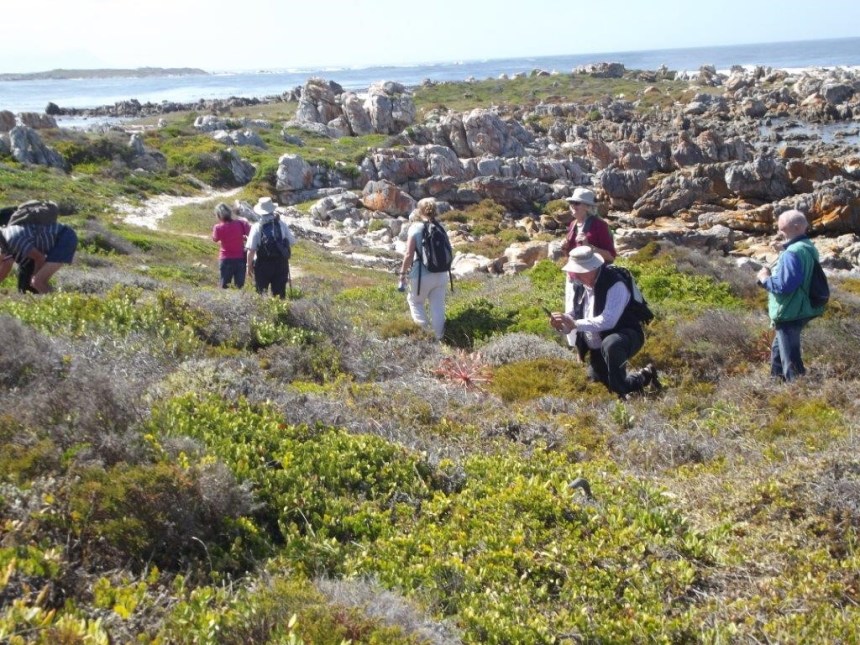MARCH WALK
Botsoc Kogelberg Walk Report: 19 March 2016
Tim Attwell
The village of Pringle Bay was anything but sleepy on the morning of 19 March. The hugely popular and well organised annual Village Festival made assembling the eager Botanical Society walkers among the crowds of festival goers tricky to say the least. Not to be deterred, sixteen members found each other at the Drosters Centre and drove in convoy to the start of an exploration of the much less populated and splendid coastal path beginning at Moonlight Bay (aka Grootbaai), circling round to Cape Hangklip with its famous lighthouse and completing the circular route at the Skuitbaai fishing boat slipway.
Despite its proximity to the holiday throngs at Pringle Bay, the small peninsula presided over by the Hangklip Lighthouse retains an atmosphere of remoteness and a touch of mystery. It’s not difficult to remember that this was once the haunt of fugitives from 18th and 19th century Cape colonial administration. The sunlit expanse of Moonlight Bay was inhabited, not by beachgoers, but a solitary baboon.

The path wound its way through hardy, succulent Cape Seashore Vegetation where a few surprisingly early blooms of Rankbietou, Dimorphotheca fruticosa, gave promise of the massed displays that will appear in late winter and early spring, along with a profusion of Lampranthus, Tetragonia and Osteospermum species.
But our goal was to find the wierd and wonderful candelabra flower, Brunsvigia orientalis and that other inhabitant of Overberg Dune Strandveld, among other sand loving vegetation types, one of the paintbrush lilies, the Misryblom, Haemanthus coccineus.


After a stop for tea and snacks near the lighthouse, the path took us above the Cape Seashore Vegetation and onto Overberg Dune Strandveld where, despite severe invasions of Acacia cyclops (Rooikrans), our search was rewarded. Boldly showing themselves above the low, wind pruned Acacia cyclops were many blooms, some past their prime, many in the scarlet flush of youth, of Brunsvigia orientalis. Also undeterred by the Rooikrans, bright red-orange Haemanthus coccineus soon came into view.

The remnants of ancient strandloper fish traps, broad semi-circles of rocks barely discernible above the rising tide in Skuitbaai, recalled a time long before colonisation.

The area strangely combines human environmental carelessness, unrestrained alien plant invasion, signs of abalone poaching and litter, with exquisite and fascinating natural beauty. It’s an area that needs to be loved and cared for much more than it is.
